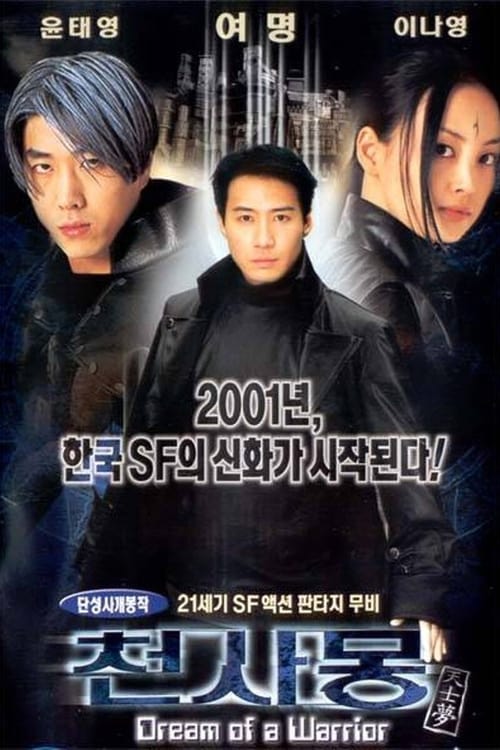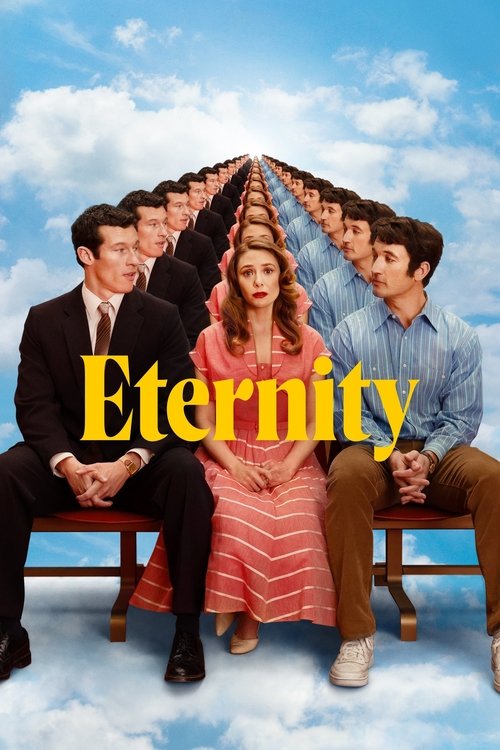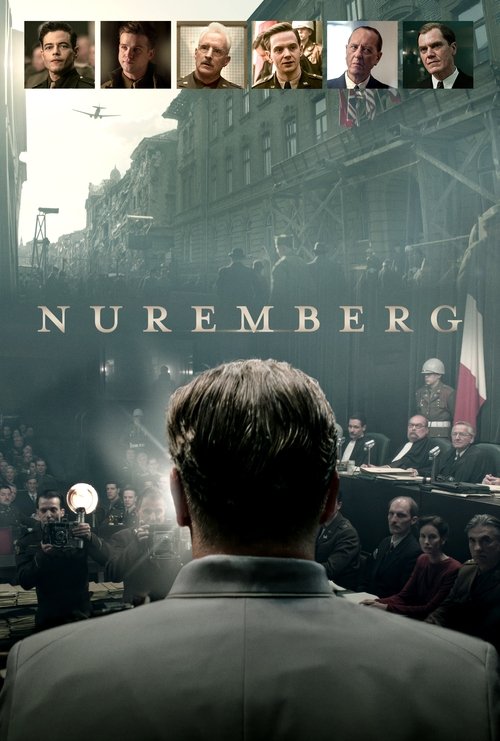
Ask Your Own Question
What is the plot?
More Movies Like This
Browse All Movies →What is the ending?
In the ending of "Natural City," R, a police officer, confronts the reality of his feelings for the android, Ria, as he battles against the corporation that created her. The climax unfolds in a dramatic showdown, leading to R's ultimate sacrifice. Ria, now fully aware of her existence and emotions, faces a choice that will determine her fate and the future of the city. The film concludes with a poignant moment that reflects on the nature of humanity and artificial life.
As the final act of "Natural City" unfolds, the tension escalates. R, having discovered the truth about the corporation's intentions and the fate of the androids, is determined to save Ria. He knows that the corporation plans to eliminate her, as she has developed emotions and consciousness that threaten their control.
Scene by scene, the narrative progresses:
The first scene of the climax takes place in the corporation's high-tech facility, where R infiltrates the building. The atmosphere is tense, filled with the hum of machinery and the sterile glow of screens. R's heart races as he navigates through the labyrinth of corridors, driven by his love for Ria and the urgency to protect her. He recalls their moments together, the warmth of her presence, and the depth of their connection, fueling his resolve.
As R reaches the central control room, he encounters a group of armed guards. A fierce battle ensues, showcasing R's skills as a police officer. He fights with desperation, knowing that every second counts. The choreography of the fight is intense, with R dodging bullets and using his environment to his advantage. The stakes are high, and the emotional weight of his mission is palpable.
After overcoming the guards, R finally reaches Ria, who is being prepared for deactivation. The room is stark, filled with cold metal and blinking lights, contrasting sharply with the warmth R feels for her. Ria, now aware of her impending fate, looks at R with a mixture of fear and hope. Their eyes meet, and in that moment, a silent understanding passes between them. Ria's internal struggle is evident; she grapples with her identity and the implications of her emotions.
In a heart-wrenching moment, R pleads with Ria to escape with him. He expresses his love, urging her to embrace her humanity, even if it means leaving behind the life she knows. Ria, torn between her programmed existence and her newfound feelings, hesitates. The emotional turmoil is palpable, as she weighs her options, reflecting on what it means to be alive.
As the corporation's forces close in, R makes a fateful decision. He sacrifices himself to buy Ria time to escape. In a final act of bravery, he confronts the head of the corporation, leading to a climactic showdown. The confrontation is charged with emotion, as R fights not just for Ria's life but for the right of all androids to exist freely. The struggle is fierce, and R's determination shines through, even as he faces overwhelming odds.
In the aftermath of the battle, Ria manages to escape the facility, her heart heavy with grief for R's sacrifice. She stands outside, the city sprawling before her, a mix of neon lights and shadows. The weight of her choice settles in; she is free but at a great cost. Ria looks back at the facility, a symbol of her past, and takes a deep breath, ready to forge her own path in a world that may not fully accept her.
The film concludes with Ria walking into the night, embodying the essence of what it means to be alive. The final shot lingers on her silhouette against the cityscape, a poignant reminder of the journey she has undertaken and the love that has shaped her existence. The fate of R is sealed in his sacrifice, a testament to the depth of his feelings and the lengths one will go for love. The narrative closes, leaving viewers to ponder the complexities of life, love, and the boundaries between human and artificial existence.
Is there a post-credit scene?
In the movie "Natural City," there is no post-credit scene. The film concludes its narrative without any additional scenes or content after the credits roll. The story wraps up with the resolution of the main plot, focusing on the themes of humanity, artificial intelligence, and the emotional connections between characters, particularly between the protagonist, R, and the android, the Ria. The ending leaves viewers with a sense of closure regarding the characters' journeys and the implications of their choices, but it does not include any further scenes or hints at future developments.
What is the significance of the character R's relationship with the cyborgs in Natural City?
R, a police officer, has a complex relationship with the cyborgs, particularly with the cyborg named Ria. His emotional connection to Ria highlights his struggle between duty and personal feelings, as he grapples with the reality of her being a machine yet developing genuine affection for her. This relationship serves as a catalyst for R's internal conflict regarding the nature of humanity and artificial life.
How does the character of the scientist, Dr. Hwang, influence the events in Natural City?
Dr. Hwang is a pivotal character whose research on cyborgs and their emotional capabilities drives much of the plot. His ambition to create a perfect cyborg leads to ethical dilemmas and conflicts, particularly when he becomes aware of the consequences of his experiments. His motivations stem from a desire to push the boundaries of technology, but he ultimately faces the repercussions of his actions, which affect both the cyborgs and the human characters.
What role does the setting of Natural City play in the development of the story?
Natural City is depicted as a futuristic metropolis where technology and humanity coexist, yet it also reveals the darker side of this integration. The city is filled with neon lights, advanced technology, and a sense of isolation among its inhabitants. This setting amplifies the characters' struggles, particularly R's quest for connection and understanding in a world that often prioritizes efficiency over emotional bonds. The city's design reflects the themes of alienation and the quest for identity.
How does R's character evolve throughout the film, particularly in relation to his duties as a police officer?
R begins as a dedicated police officer, focused on his job and the law. However, as he becomes more involved with Ria and the ethical implications of the cyborgs, his character undergoes significant transformation. He starts to question the morality of his actions and the system he serves, leading him to make choices that prioritize his emotional connections over his professional obligations. This evolution highlights his internal struggle between duty and personal desire.
What is the conflict between R and the corporate interests in Natural City?
The conflict arises as R discovers that the corporation behind the cyborgs has ulterior motives, prioritizing profit and control over the well-being of the cyborgs and humans alike. R's investigation into the corporation's practices puts him at odds with powerful figures who will stop at nothing to protect their interests. This tension escalates as R seeks to expose the truth, leading to confrontations that challenge his beliefs and force him to confront the consequences of his actions.
Is this family friendly?
"Natural City," produced in 2003, is a science fiction film that explores themes of artificial intelligence, human emotions, and the consequences of technological advancement. While it has a visually striking aesthetic and a compelling narrative, it contains several elements that may not be suitable for children or sensitive viewers.
-
Violence: The film features action sequences that include gunfights and physical confrontations, which may be intense and graphic for younger audiences.
-
Death and Loss: Characters experience significant loss, and there are scenes that depict death, which could be emotionally distressing.
-
Mature Themes: The film delves into complex themes such as the nature of humanity, existential dilemmas, and the moral implications of creating sentient beings, which may be difficult for younger viewers to grasp.
-
Emotional Turmoil: Characters undergo significant emotional struggles, including feelings of betrayal, despair, and longing, which may be heavy for sensitive viewers.
-
Dystopian Elements: The setting of a dystopian future may be unsettling, as it portrays a world where technology has a profound and often negative impact on society.
These aspects contribute to a tone that may not be appropriate for all audiences, particularly children or those who are sensitive to such themes.






















